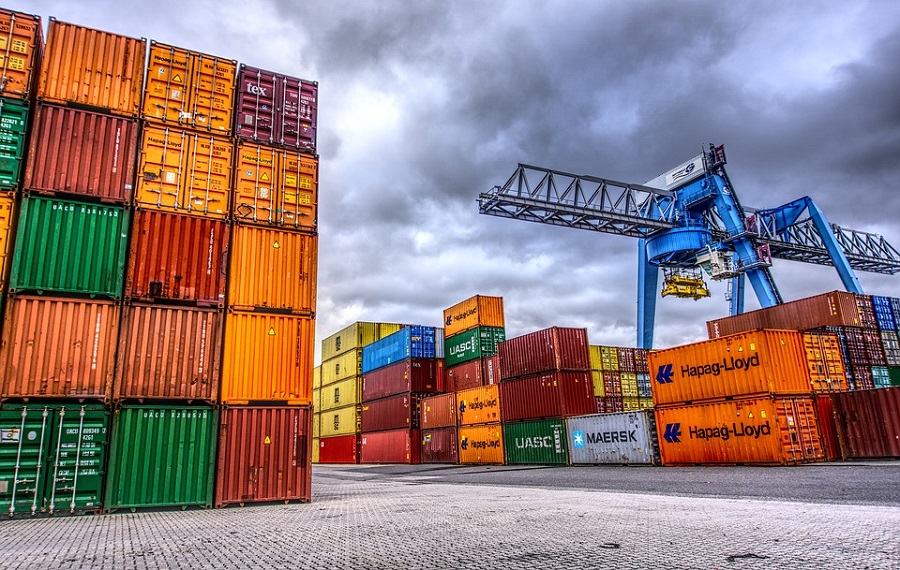RIO DE JANEIRO, BRAZIL – Compared to July 2020, there was an increase of 38.6% in the average prices of exports, and 20.8% in the year-to-date. According to IPEA’s Situation Group, the average price of products shipped from Brazil remains on an upward trend.
Last month, despite the slowdown in exports, some Brazilian agribusiness products reached record export volumes for the first half of 2021: coffee, sugar, cotton and pork.

In the year-to-date, from January through July 2021, the products with the highest positive variation in average prices were soy (28.6%), beef (12.2%), sugar (14.7%), wood (15%) and corn (22.2%).
“Coffee and sugar production can be impaired by climate issues, as it was also due to the lack of rain that soybean planting was delayed, and frost compromised part of the second corn crop,” said the director of Macroeconomic Studies and Policies (Dimac/IPEA) José Ronaldo Souza Júnior.
Brazil holds a significant share in the global trade of these commodities and a drop in export volume impacts the future prices of these products, the director adds.
Health issues in a number of countries contributed to an increase in Brazilian pork and chicken exports (in this case, there was a diversification of importing countries).
“China continues to lead the list of the main Brazilian pork importing countries. But, the highlight this time was the increase in exports to Argentina and Uruguay, which raised their beef exports, and offset the domestic demand for animal protein with pork from Brazil,” noted Ana Cecília Kreter, an associate researcher at IPEA and one of the study’s authors.
The researchers’ analysis was based on data from the Ministry of Economy’s Foreign Trade Secretariat (SECEX/ME), the Ministry of Agriculture, Livestock and Supply (MAPA), the National Supply Company (CONAB), the Brazilian Institute of Geography and Statistics (IBGE), in addition to the United States Department of Agriculture (USDA).
Soybean complex – which includes soybeans, soybean meal and soybean oil – continues to lead exports. In July, the 8.8% drop in exported volume was offset by the 21.6% increase in value compared to July 2020. The grain’s average prices increased by 28.6%.
Brazil is the world’s second largest beef producer and the world’s largest exporter. As a result, the drop in domestic supply has been reflected in international prices since last year. The average price of beef had an increase of 31.9%.
Brazil has been struggling to secure containers to ship the product, in addition to the low offer of finished cattle (the name given to cattle ready for slaughter, when they reach the ideal weight for sale).
The average price of corn increased by 27.6% in July, despite the 36.4% drop in value and 50.2% in quantity over the same month in 2020.
The rebound in grain prices has been occurring since January this year, with year-to-date growth of 22.2% compared to the same period last year. The drop in domestic production due to weather issues has limited Brazil’s export capacity.
Sugar was the second product (after corn) with the biggest drop in exported quantity (25%) in July this year compared to 2020. Despite the 10.9% drop in value, it closed the month with an 18.9% increase in average prices. In the year-to-date there was an increase of 21.6% in value, 6% in quantity, and 14.7% in average price.
The estimates for the Brazilian and European harvests are being impacted by the reduction in planted area and due to uncertainties in relation to climate (water stress).
Climate change is also to blame for the drop in coffee production estimates. CONAB and IBGE have revised downwards their estimates for the 2021/2022 harvest in Brazil.
Due to the negative biennial, estimates were lower than last year’s harvest. Despite the 15.9% drop in quantity and 1.2% drop in value compared to July last year, there was a 17.5% increase in the coffee bean’s average price. In the year-to-date there was an increase of 12.8% in the volume shipped and 15.2% in the price compared to the same period last year.
Chicken was the second product on the export list with the greatest variation in value (47.3%) in July compared to the same month last year. There was also growth in quantity (15.4%) and in average price (27.6%). In the year-to-date, the increase was sustained in value (15.1%), quantity (7.4%) and in the average price (7.2%).
New destinations contributed to the positive performance: Mexico, the Philippines and South Africa increased their imports due to domestic health issues linked to herd diseases.
The growth in international demand and the appreciation of pork since the outbreak of the African Swine Fever (ASF) in 2012, led to a 19% increase in the average price of pork in July and 8.8% year-to-date compared to the same period in 2020. In volume, there was an increase of 1.7% in July and 14.6% year-to-date compared to last year.

